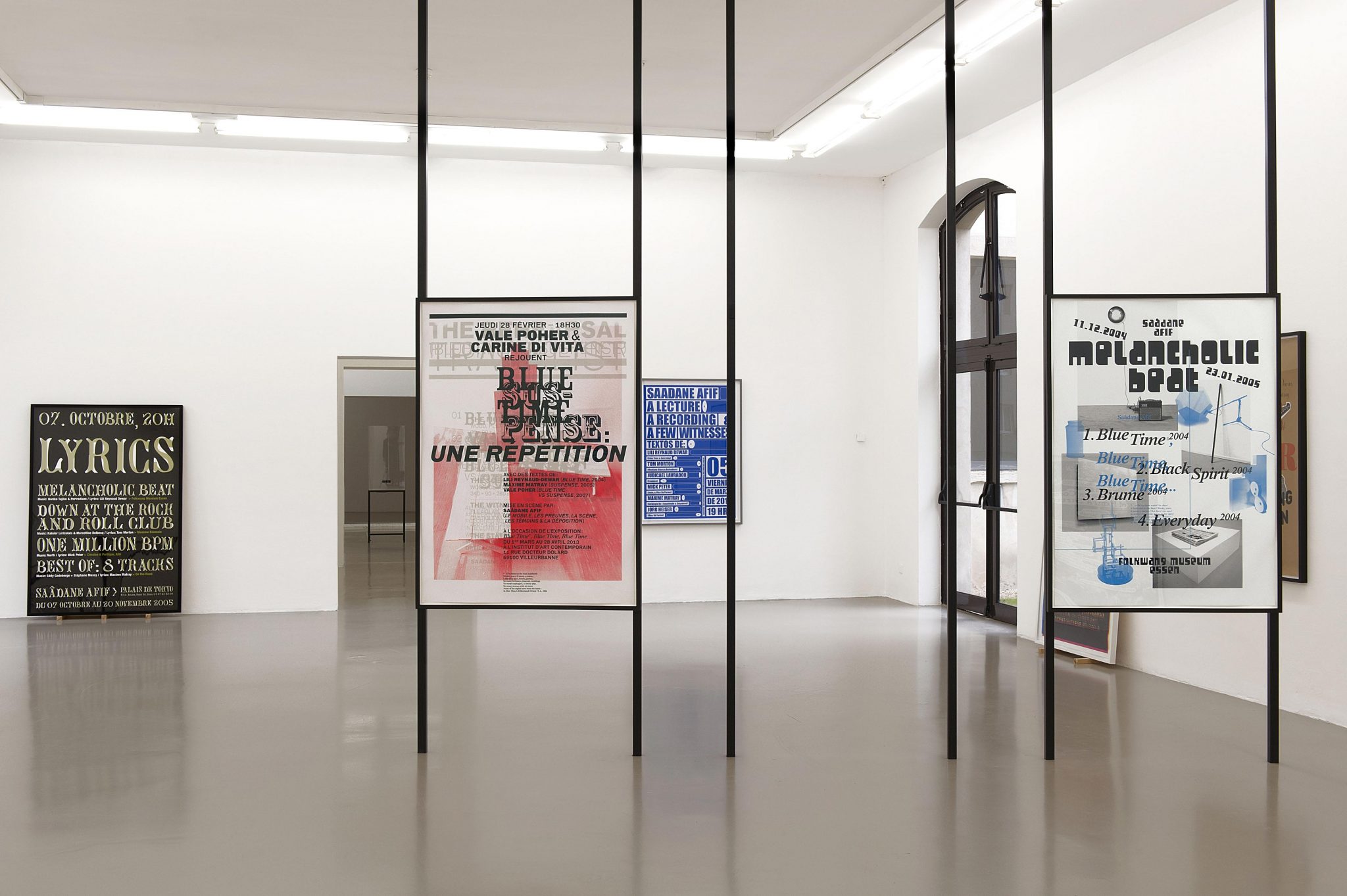Saâdane Afif ’s work is preoccupied with an aestheticisation of popular music. The French artist avoids referencing particular artists or tracks, however (and therefore avoids the pitfall of nerdish fandom), and instead composes lyrics and compositions from scratch (or gets a bevy of artist and curator friends to do so), which are then nodded to within the multitudinously varied sculptural forms that predominate in this survey of his practice from 2004 onwards. The first works the visitor encounters introduce this playful, hermetic setup. Various posters, each displaying a typeface and design that is typical of and graphically resonant with a particular music genre (a curled faux-traditional font denoting nu-folk; a background tricolour of red, yellow and green signifying reggae), are displayed on the walls and via floor-to-ceiling frames. Instead of touting gigs, however, each was made contemporaneously with previous shows or events staged by Afif (one space is left empty for a poster that will be produced following a closing performance). In the recognisable format of a gig lineup, other artists are mentioned if the exhibition in question was a group one; otherwise, the lines credit the curator or collaborators. One poster, blue and white with block type reminiscent of a techno flyer, bills a 2010 event with the participation of Tom Morton, Jörg Heiser, Mick Peter and Lili Reynaud-Dewar, headlined as if they were DJs and not writers and artists respectively.
Reynaud-Dewar’s name is present throughout the exhibition, as the author of a ballad lamenting unrecognised musical talent, the lyrics of which are spelled out on the wall in holographic foil (the rainbow glint recalling the verso of a CD). This installation is repeated in several of the gallery’s spaces. In one room it is joined by further poignant song lyrics written by more of Afif ’s peers. Elsewhere, melancholic recordings – varying from structured songs to abstract soundscapes – spill throughout the venue from sculptures, amps or, in one case, a digital radio. In one room stands an acoustic guitar in a vitrine (as though in a Rock and Roll Hall of Fame exhibit); in Feedback – Blue Time vs. Suspense (2009), two maquettes reproduce some of the sculptures in miniature form within the context of a model stadium stage. Elsewhere headphones allow one to hear the recording of a ‘rehearsal session’ staged during the opening of the exhibition in a closed-off gallery space. Guests were privy to the false starts and jamming, but musicians remained out of sight.
Two works hint at the artist’s specific reasons for being interested in music, however (each also seem to reference Felix Gonzalez- Torres). In Suspense (2013) two clocks are mounted side by side, their faces masked by black tape. For Everyday (Le Progrès) (2013), a new copy of the local newspaper is added to a daily-increasing pile. These establish an interest in time passing to the work and flag up popular music’s durational form: its ability to commandeer and sculpt a momentary period through its emotional resonance. Evidenced by the harking back to previous, memorialised events in the artist’s personal history, this packed show – which itself colonises the aural and visual senses – acts as a moody ode to those emotional shadows, imbued with popular culture, that cling to our own pasts.
This article was first published in the May 2013 issue.
